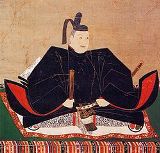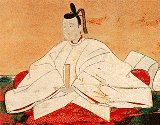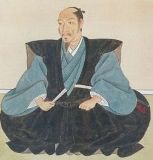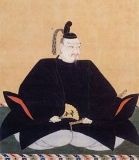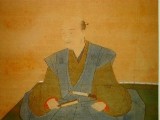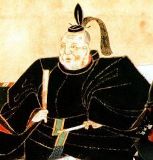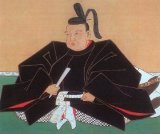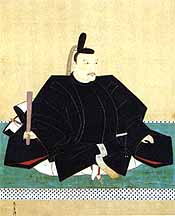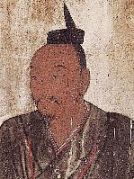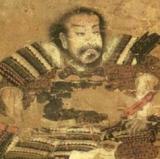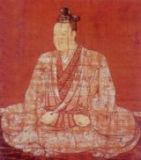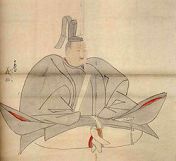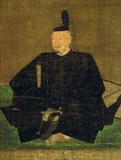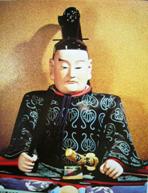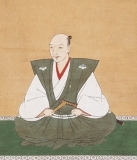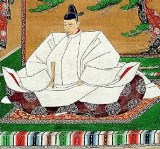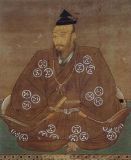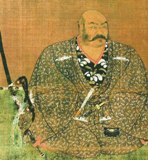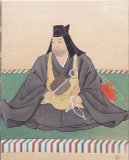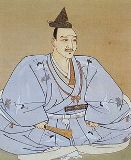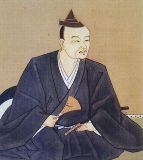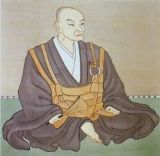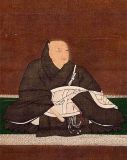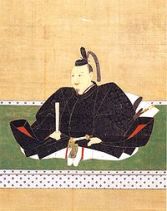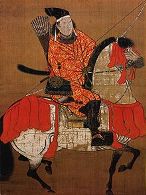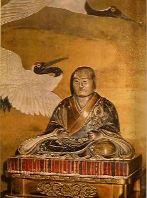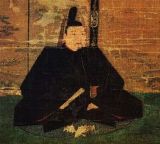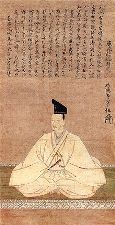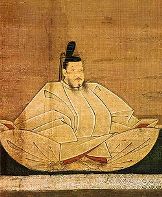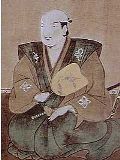
|
Table of Contents
Sengoku/Azuchi Momoyama Era 戦国・安土桃山時代 1530-1600 Resources
|
Source: Ishii Susumu, Kasahara Kazuo, Kodama Yukita, Sasayama Haruo "Shosetsu Nihonshi Kaiteiban" (詳説日本史改訂版), Yamakawa Publishing, Tokyo, 2002, pp.129-144 Activities of the Bakufu and the Ōnin War The rule of the Bakufu under Ashikaga Yoshimitsu`s successor, Yoshimochi (義持), was preserved by an even distribution of authority between the Shōgun and influential daimyō, thereby producing a comparatively stable government. However the succession of the 6th Ashikaga Shōgun Yoshinori (義教) saw him seek to expand the power of the Shōgun through the Bakufu by simultaneously removing all of the power from institutions affiliated with the Bakufu. This led to hostilities between the Bakufu and the Kamakura Fu in the Kantō region. In 1438 (Eikyō 10, 永享10), Yoshinori sent an army of suppression to the east, which succeeded in crushing the power of the Kamakura Kubō Ashikaga Mochiuji (持氏, 1398-1439) in a conflict known as the Eikyō Rebellion (永享の乱). In order to expand his monopoly on power, Yoshinori had thus destabilized the political institution of the Bakufu. In 1441 (the 1st year of Kakitsu, 嘉吉) the influential shugo Akamatsu Mitsusuke (赤松満祐, 1381-1441), fearing that he too would be punished by the Bakufu, assassinated Yoshinori. The Akamatsu family were subsequently crushed by the Bakufu (during the Kakitsu War, or 嘉吉の乱), however the entire incident seriously weakened the authority of the Bakufu.(129) While the authority of the Bakufunate was being transferred to influential regional daimyō, a conflict broke out that would prove the trigger for the outbreak of the Sengoku era (Era of the Warring States) within a generation – the Ōnin War.(129) The Ōnin War began as a dispute between two families who served as the Kanrei to the Bakufu, the Hatakeyama and the Shiba, however this was later superseded by a dispute between the younger brother of the 8th Shōgun Ashikaga Yoshimasa (義政, 1436-1490), Ashikaga Yoshimi (義視, 1439-1490?) and the child of Yoshimasa and his wife Hino Tomiko (日野富子, 1440-1496), Ashikaga Yoshihisa (義尚, 1465-1489), over who would inherit the title and authority of the Shōgun.(130) At the same time, the Bakufu was served by two powerful retainers by the names of Hosokawa Katsumoto (細川勝元, 1430-1473) and Yamana Mochitoyo (山名持豊, 1404-1473, later known by the Buddhist name of Sōzen 宗全), both of whom attempted to seize the power associated with the Bakufu for themselves. By supporting either Yoshimi, Yoshimasa, or Yoshihisa, both retainers escalated the degree of hostility towards one another, so much so that by 1467 (the 1st year of Ōnin, 応仁元年) a major conflict had begun. Shugo daimyō throughout the land divided themselves into one faction or the other, with the Hosokawa faction boasting the support of 24 provinces and 160,000 troops, while the Yamana had the support of 20 provinces and 110,000 troops. Kyoto became the focal point for the conflict, with large sections of the town burned to the ground and laid waste. Fighting then spread to the provinces.(130) In 1477 (Bunmei 9, or 文明九年), both sides, having fought one another to a standstill, called a truce. The authority of the Bakufu had been destroyed by the conflict, although fighting continued to rage in the provinces. Such fighting managed to destroy the last vestiges of the Bakufu and shōen system that until now had survived outside of the capital region.(130) In the rural areas that belonged to those shugo fighting among themselves in Kyoto, the shugo-dai (守護代, or shugo representatives) as well as local kokujin (国人, a kind of local powerbroker) extended their authority, so much so that gradually the shōen estates fell under their control. These kokujin, in order to protect their newfound gains, banded together to mutual protection in the form of a kokujin ikki (国人一揆). In 1485 (Bunmei 17), a kokujin ikki in the south of Yamashirō province expelled to two factions of the Hatakeyama family that were warring against one another. By gaining the support of the local peasantry and commoners, the kokujin ikki proceeded to rule over the territory of southern Yamashirō for the next eight years. This was an age that saw those lower on the social scale usurping the power and authority of those higher placed in society. This phenomenon was known as gekokujō (下克上, literally the low overthrowing the high).(131) Another example of this phenomena appeared in the form of the Kaga Ikkō Ikki in 1488 (Chōkyō 2). This particularly uprising arose out of the spread of the Honganji sect of the Jōdō Shinshū (or Pure Land) faith as a result of the proselytising of the head of the sect Rennyo (蓮如, 1415-1499). Followers of the sect known as the Monto (門徒) joined forces with the local kokujin and together overthrew the authority of the incumbent shugo of Kaga province Togashi Masachika (富樫政親, 1455-1488). Thereafter the Ikki ruled over Kaga as a domain of the Honganji sect for an entire generation.(131) The appearance of Sengoku daimyō In the midst of the chaos caused by the Ōnin War, in provinces across the land, local rulers began to seize power for themselves. By the beginning of the sixteenth century, conflict surrounding the succession of power within the Muromachi Bakufu and an internal dispute within the Hosokawa family continued to rage in the central Kinki region. Meanwhile the traditional structure of power in the provinces had broken down into smaller sections, with each section ruled over by a local powerbroker in competition against others neighbouring his lands. The age of the Sengoku daimyō had arrived.(143) In the Kantō region immediately before the outbreak of the Ōnin War, the office of the Kamakura Kubō had divided into two factions, one led by the son of Ashikaga Mochiuji, Ashikaga Shigeuji (足利成氏, 1434-1497) known as the Koga Kubō (古河公方), while the other was led by a brother of the Shōgun Yoshimasa, Ashikaga Masatomo (政知, 1435-1491) who led the Horigoe Kubō (堀越公方). The Uesugi family, who served as the Kantō Kanrei, had also split into rival factions, that of the Yamanouchi (山内) and the Ōgigayatsu (扇谷). Taking advantage of this confusion, in the late fifteenth century a local ruler by the name of Ise Sōzui (伊勢宗瑞), originally from Kyoto, overthrew the authority of the Horigoe Kubō and seized control of Izu province. He then advanced in Sagami province, captured Odawara (小田原) castle for himself, and proceed to lay the foundations for the creation of the latter Hōjō family. This ruler would later be known by the name of Hōjō Sōun (北条早雲, 1432-1519), the very epitome of a Sengoku daimyō. In the central region, Nagao Kagetora of the Nagao family, a family that had served as shugodai to the shugo Uesugi family of Echigo province, rose to prominence during the early sixteenth century. After inheriting the post and titles of the Uesugi Kantō Kanrei, Kagetora changed his name to Uesugi Kenshin (上杉謙信, 1530-1578). He would periodically clash in the northern region of Shinano province at places such as Kawanakajima (川中島) with Takeda Shingen (武田信玄, 1521-1573, known during the early years of his life as Takeda Harunobu 晴信), the ruler of Kai province who was in the process of extending his authority into Shinano province. It was at this time that the Imagawa family in Suruga and Tōtomi provinces, the Asakura in Echizen province, and the Oda family in Owari province also assumed power in their respective regions. In the western Chūgoku region, the Ōuchi family, which had been a particularly powerful shugo daimyō, lost that position as a result of a coup launched by one of their senior retainers Sue Harukata (陶晴賢, 1523-1555) in the early sixteenth century.(143) In Aki province, Mōri Motonari (毛利元就, 1497-1571), who had originally been of kokujin status, engaged in a series of desperate conflicts with the Amako family (尼子) in the Sanyō region. Meanwhile the Chōsokabe in Shikoku, the Ōtomo, Ryūzōji, and Shimazu in Kyushu, and the Date (伊達) family in the Tōhoku region continued to struggle to build their own independent fiefdoms in the manner they saw fit. Apart from the Shimazu, Ōtomo, Imagawa, and Takeda, all the other prominent Sengoku daimyō had risen from either shugodai or kokujin status. In the era of the warring states, in which the old laws and methods no longer had any merit, it was absolutely essential for any budding warlord to have the support of his retainers, who, after all, would be expected to risk life and limb in pursuit of his ambitions, as well as the support of the people of his lands whose own safety would be put in jeopardy as a result of their lord`s intentions.(144) A Sengoku daimyō therefore had to be well versed not only in military strategy and battlefield leadership, but had to be able to exercise effective administrative rule over his lands as well.(144) Sengoku daimyō were assisted in their struggle by other kokujin who had decided to join their cause, along with localized warriors known as jizamurai (地侍, literally `land samurai`) who served as retainers, who thus expanded the military power of the daimyō. The payment provided to these warriors, known as Kandaka (貫高), came from the exchange of produce for coin. This standardized the payment system across the daimyō`s lands. Not only this, it also secured both land and income for the retainers, and allowed the daimyō to impose a temporary military tax (known as a `gunyaku`, or 軍役) on his retainers in order to raise funds for armies. This system, known as the Kandakasei, formed the basis for the military power of the Sengoku daimyō. It allowed them to hire numerous jizamurai and arrange them into units. These units would then be allocated to influential retainers as part of the Yorioka・Yoriko (寄親・寄子, essentially primary and secondary unit) system, and laid the foundation for the type of warfare that would witness the emerge of specialized groups of troops wielding muskets (鉄砲, or `teppō`) and long spears (長槍, or nagayari). (144) Oda Nobunaga`s attempt at unification The first Sengoku daimyō to attempt to unify the country under one leader, and actually come close to succeeding, was Oda Nobunaga (織田信長, 1534-1582) of Owari province. In 1560 (Eiroku 3, 永禄3) Nobunaga attacked and defeated Imagawa Yoshimoto (今川義元, 1519-1560) at the Battle of Okehazama (桶狭間の戦い) following Yoshimoto`s invasion of Owari. In 1567 (Eiroku 10), Nobunaga defeated the Saitō family and extended his control over a broad area of flat farming lands. Nobunaga renamed Inabayama castle in Minō province as Gifu castle, and created a seal that bore four characters `Ten, Ka, Fu, Bu` (天下布武) thereby indicating that he would unite the nation through the force of his own military power. In the following year, Nobunaga brought the younger brother of the previous Shōgun, Ashikaga Yoshiteru (足利義輝, 1536-1565), Ashikaga Yoshiaki (足利義昭, 1537-1597), to the capital and had him acknowledged as Shōgun. Nobunaga had thus taken his first steps towards unifying the nation.(153) In 1570 (Genki 1, 元亀1年) Nobunaga defeated the Asai of Ōmi province and the Asakura of Echizen at the Battle of Anegawa. In the following year, he had the mountain temple complex of Enryakuji (延暦寺) burnt to the ground for continuing to resist his rule, despite the fact that the temple possessed extraordinary religious authority and financial power. In 1573 (Tenshō 1, 天正1年), Nobunaga clashed with Yoshiaki, who was attempting to restore the power of the Ashikaga shōgunate. Nobunaga forced Yoshiaki to flee from Kyoto, thus bringing the Ashikaga shōgunate to an end.(153) In 1575 (Tenshō 3), Nobunaga, bringing with him large quantities of muskets and ammunition, fought and defeated the cavalry forces of one of his powerful rivals, Takeda Katsuyori (武田勝頼, 1546-1582), at the Battle of Nagashino (長篠の戦い). In the following year, he set about building a new residence in Ōmi province, the great castle at Azuchi (安土). However, Nobunaga was next to face his greatest challenge. The temple complex of Honganji stood at the apex of a network of temples stretching across the nation, and were responsible for aggravating the religious uprisings against Nobunaga in the form of the Ikkō Ikki. In 1574 (Tenshō 2), Nobunaga eliminated the Ikkō Ikki at Nagashima, purged the Ikkō Ikki from Echizen in the following year, and in 1580 (Tenshō 8), Ishiyama Honganji surrendered.(153) In this manner, Nobunaga pacified Kyoto, brought the Kinki, Tokai, and Hokuriku under his control, and almost succeeded in his quest to unify the country. However in 1582 (Tenshō 10), while preparing to embark for the western countries to subdue the Mōri, Nobunaga was attacked by one of his retainers, Akechi Mitsuhide (明智光秀, 1528-1582) at the temple of Honnōji in Kyoto, where he died (the incident itself is referred to as the `Honnōji Incident`, or Honnōji no Hen 本能寺の変).(154) Nobunaga certainly possessed considerable organisational, administrative as well as military abilities. As a military commander, not only did he overthrow his rivals one after another, yet he challenged the accepted practices for politics and economics by abolishing the use of toll gates etc, and introduced new methods of rule. Through his military prowess he captured the port city of Sakai (境), the wealthiest city in the entire country and previously an independent entity in its own right, and made it a pivotal part of his territories. This then concentrated the economic power of the Kinai region in Nobunaga’s hands. At the base of Azuchi castle towns emerged known as Rakuichi (楽市) and Rakuza (楽座). These towns allowed the merchants and artisans that gathered there to trade their wares as they saw fit, which in turn led to a new kind of civic administration.(154) After Nobunaga, the next prominent figure among Sengoku daimyō that actually succeeded in unifying the country was Toyotomi Hideyoshi (豊臣秀吉, 1537-1598). Hideyoshi was born into a farming household in Owari province and was therefore of commoner origins. As a retainer of Oda Nobunaga, Nobunaga quickly realised Hideyoshi’s talents, so much so that Hideyoshi became one of Nobunaga’s most capable and trusted generals. Upon learning of the incident at Honnōji temple, Hideyoshi, who himself was in the western provinces at the time, quickly secured a truce with the Mōri, and in 1582 (Tenshō 10) at the Battle of Yamazaki (山崎の合戦) in Yamashiro province, defeated Akechi Mitsuhide. One year later he defeated the renowned Oda retainer Shibata Katsuie (柴田勝家, 1522-1583) at the Battle of Shizugatake (賤ヶ岳の戦い), thus securing his position as the heir to Nobunaga’s rule. In the same year Hideyoshi, recognizing its importance as a thoroughfare for land and sea trade, had the foundations for Osaka castle built on what had been the thriving commercial town surrounding Ishiyama Honganji. In 1584 (Tenshō 12), Hideyoshi fought against Oda Nobuo (織田信雄, 1558-1630, the second son of Nobunaga) and Tokugawa Ieyasu (徳川家康) at the Battle of Komaki and Nagakute (小牧・長久手の戦い) in Owari province, however this conflict ended in a truce.(154) In 1583 (Tenshō 13), Hideyoshi overthew the Chōsokabe in Shikoku and pacified the island, and was subsequently named as Kanpaku (関白) by the imperial court (a position that had previously only been held by aristocratic families). In 1585 he was named Taikō Daijin (太閤大臣), upon which he took the surname of Toyotomi. By being named as Kanpaku, the imperial court had declared that Hideyoshi was ruler over the nation and responsible for its stability. Hideyoshi put this designation to use, first calling for a halt to all conflict throughout the land (known as the Sōbuji, or 惣無事). He then ordered daimyō that were still feuding to cease fighting, and demanded that they acknowledge his right to judge their territorial claims. In 1587 (Tenshō 15), Hideyoshi landed in Kyushu in order to crush the forces of Shimazu Yoshihisa (島津義久, 1533-1611), a daimyō who by that stage already had half of Kyushu under his control and who refused to obey Hideyoshi’s order to halt his invasions of neighbouring provinces. Yoshihisa was thus forced to capitulate to Hideyoshi. In 1590 (Tenshō 18), Hideyoshi attacked and defeated Hōjō Ujimasa (北条氏政, 1538-1590) at the siege of Odawara castle (小田原攻め). After Date Masamune (伊達政宗, 1567-1636) succeeded in pacifying the various daimyō of the Tōhoku region, Hideyoshi’s conquest of Japan was complete. While Hideyoshi trod the same path as Nobunaga, Hideyoshi not only relied on military conquest to secure his position, but used his influential economic power and traditional forms of authority to unify the nation under his rule. (155) The economic basis for the Toyotomi government was the Kurairichi (蔵入地), a series of directly administered territories throughout the land worth approximately two million koku. Hideyoshi also placed the mining regions of Sado (佐渡), Iwami Ōmori (石見大森), and Tajima Ikuno (但馬生野) under his immediate supervision, thereby monopolizing the wealth and profit derived from the extraction of gold and silver, which in turn led to the appearance of currency known as the Tenshō Ōban (天象大判). In addition, Hideyoshi made the major cities of Osaka, Sakai, Fushimi, and Nagasaki part of his personal fiefdom and placed wealthy merchants (known as Gōshō, or 豪商) under his rule, thus making use of both his political and military power for economic ends. (155) Hideyoshi’s foreign strategy and invasion of the Korean peninsula At the outset of his rule, Hideyoshi acknowledged the right of Christian missionaries to preach their religion, however as his concept for the nation began to take hold, he began to regard missionaries as an impediment to national unity. In 1587 (Tenshō 15), Hideyoshi learnt that the Christian daimyō Ōmura Sumitada had decided to donate the fiefdom of Nagasaki to the Society of Jesus. Hideyoshi thereupon introduced a system whereby daimyō would have to first ask for permission before they were allowed to become Christian. This was followed by an order expelling all missionaries from Japan (the ‘Order for the Expulsion of Padres’, or バテレン追放令). In 1588 (Tenshō 16) Hideyoshi announced the ‘Order for the Suppression of Piracy’ (or 海賊取締令) thereby banning any act of piracy and strengthening Hideyoshi’s control over the sea. By securing sea routes to east Asia for the merchants of Kyoto, Sakai, Nagasaki, and Hakata and encouraging trade with south east Asia, the suppression of Christianity was by no means thorough, and the teachings of Christianity continued to spread throughout the country.(158) International relations in east Asia in the latter half of the sixteenth century underwent a change as a result of the declining power of Ming China, a nation that had previously maintained the traditional status quo centred on Chinese rule. Having united Japan under his rule, Hideyoshi turned his attention towards creating a new set of international norms for east Asia that would place Japan at the centre of this system. Hideyoshi subsequently demanded that the Portuguese settlement at Goa (in southern India), the Spanish settlement at Manila, and the island of Kōzankoku (Taiwan) acknowledge him as their ruler and send tribute. These were the first inklings of Hideyoshi’s overseas ambitions. (158) In 1587 (Tenshō 15), Hideyoshi, via the Sō (宗) family of Tsushima, demanded that the Chōsen Kingdom of Korea provide both money and troops in preparation for an invasion of Ming China. When Chōsen refused, Hideyoshi began to make arrangements to send troops to the continent. After the construction of the castle of Nagoya (名護屋) in Hizen province as a base of operations, in 1592 (Bunroku 1, or 文禄元年), a large army consisting of 150,000 troops was dispatched to the Korean peninsula (an event known as the ‘Bunroku Mission’, or 文禄の役). After landing at Pusan, the Japanese army, armed with the latest weaponry including muskets, forced their way north, capturing the city of Han (modern Seoul) and eventually occupying the city of Heijō (modern Pyongyang). However the activities of the Chōsen navy under Yi Sunshin (李舜臣, 1545-1598) and Chōsen resistance fighters, coupled with reinforcements sent from Ming China, exhausted the Japanese army’s line of supply, and slowly the war began to turn against the Japanese. This forced Hideyoshi to make a truce with Ming China and order a ceasefire, however the conditions of Hideyoshi’s truce differed so greatly to those of Ming China that negotiations ultimately proved useless.(159) In 1597 (Keichō 2, or 慶長2年) Hideyoshi once against launched an invasion of the Korean peninsula, this time with an army of 140,000 troops (in what was known as the ‘Keichō Mission’, or 慶長の役). However the invasion proved exceedingly difficult from the outset, and with the death of Hideyoshi in the following year the decision was made to withdraw from the continent. The invasion of the Kingdom of Chōsen, which itself lasted around 7 years, brought war to the people of the Korean peninsula and left a great deal of death and destruction. Domestically, the invasion used up vast quantities of both men and materials, all of which ended in waste, which in turn would be the principle factor behind the waning of the power of the Toyotomi.(161) Incidentally, the term Azuchi Momoyama refers to the names of the castles inhabited by Oda Nobunaga and Toyotomi Hideyoshi, and thus is used as a means of identifying the era of the mid to late sixteenth century. The culture that emerged during this era, namely in terms of the tea ceremony and art, is referred to as Momoyama culture, or ‘Momoyama Bunka’ (桃山文化).(159)The establishment of the Edo Bakufu Tokugawa Ieyasu (徳川家康, 1542-1616), the one time ally of Oda Nobunaga and ruler of the provinces of the Tokai region, used the occasion of the downfall of the Hōjō family in 1590 to move to the Kantō and establish himself as a daimyō with a fiefdom worth two million five hundred thousand koku. Under the Toyotomi government, Ieyasu served as a ‘secretary’ (Hitō, or 筆頭), however after Hideyoshi’s death he quickly rose in prominence. In 1600 (Keichō 5), the rivalry that previously existed between Ieyasu and one of the Gobugyō, Ishida Mitsunari (石田三成, 1560-1600) rose to the surface. Mitsunari, forming an alliance with another of the Gobugyō, Mōri Terumoto (毛利輝元, 1553-1625), raised an army against Ieyasu (the ‘Western Army’, or 西軍). The ‘Eastern Army’ (東軍) that opposed this consisted of Ieyasu and a number of other prominent daimyō, including Fukushima Masanori (福島正則, 1561-1624) and Katō Kiyomasa (加藤清正, 1562-1611). Both armies met at the Battle of Sekigahara (関ヶ原の戦い).(163) Ieyasu, having established himself at Edo, ordered that all other daimyō were to contribute funds to the building of a castle at Edo and the town that would surround it. Ieyasu also ordered that a map be drawn up outlining the distribution of fiefdoms throughout the land and an audit made of each territory. It was clearly an attempt to show that Ieyasu now controlled the nation. However, Hideyoshi’s son Toyotomi Hideyori (豊臣秀頼, 1593-1615), himself living in Osaka castle, believed that he was legitimately entitled to inherit Hideyoshi’s position and refused to obey Ieyasu’s orders. In 1605 (Keichō 10), Ieyasu, in order to show other daimyō that the position of Shōgun was to be hereditary, resigned as Shōgun and handed responsibility for the post to his son Tokugawa Hidetada (徳川秀忠, 1579-1632). Ieyasu thereafter moved to Sunpu (駿府) to ostensibly live out his retirement, however in reality he still held onto the reins of power. In 1614-15 (Keichō 19 – Genna 1, or 元和元年), during the Osaka Mission (大阪の役, consisting of the Osaka Winter and Summer camps, or 大阪冬の陣・夏の陣 ), the Tokugawa succeeded in removing the last vestiges of Toyotomi rule.(163) |
|---|---|

